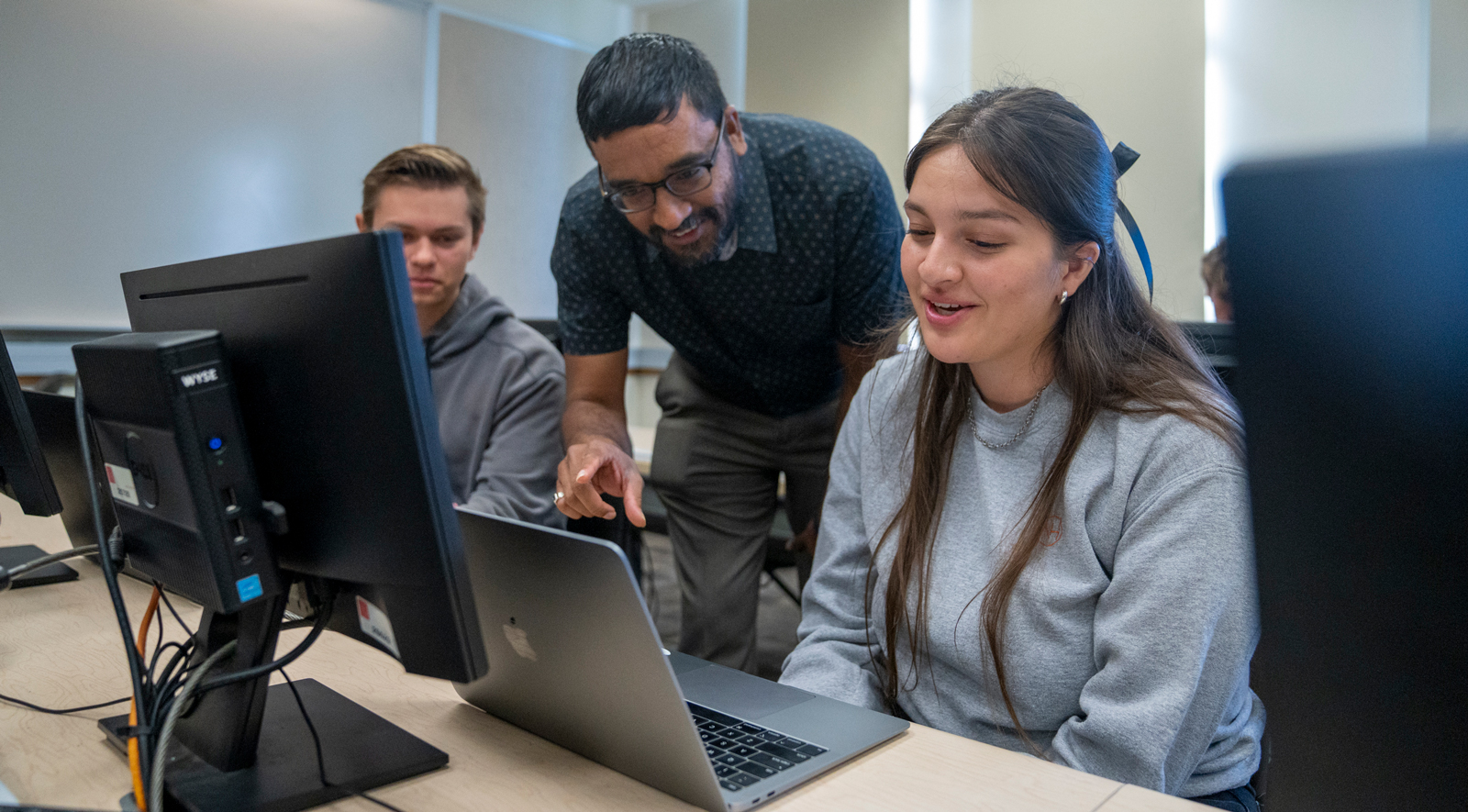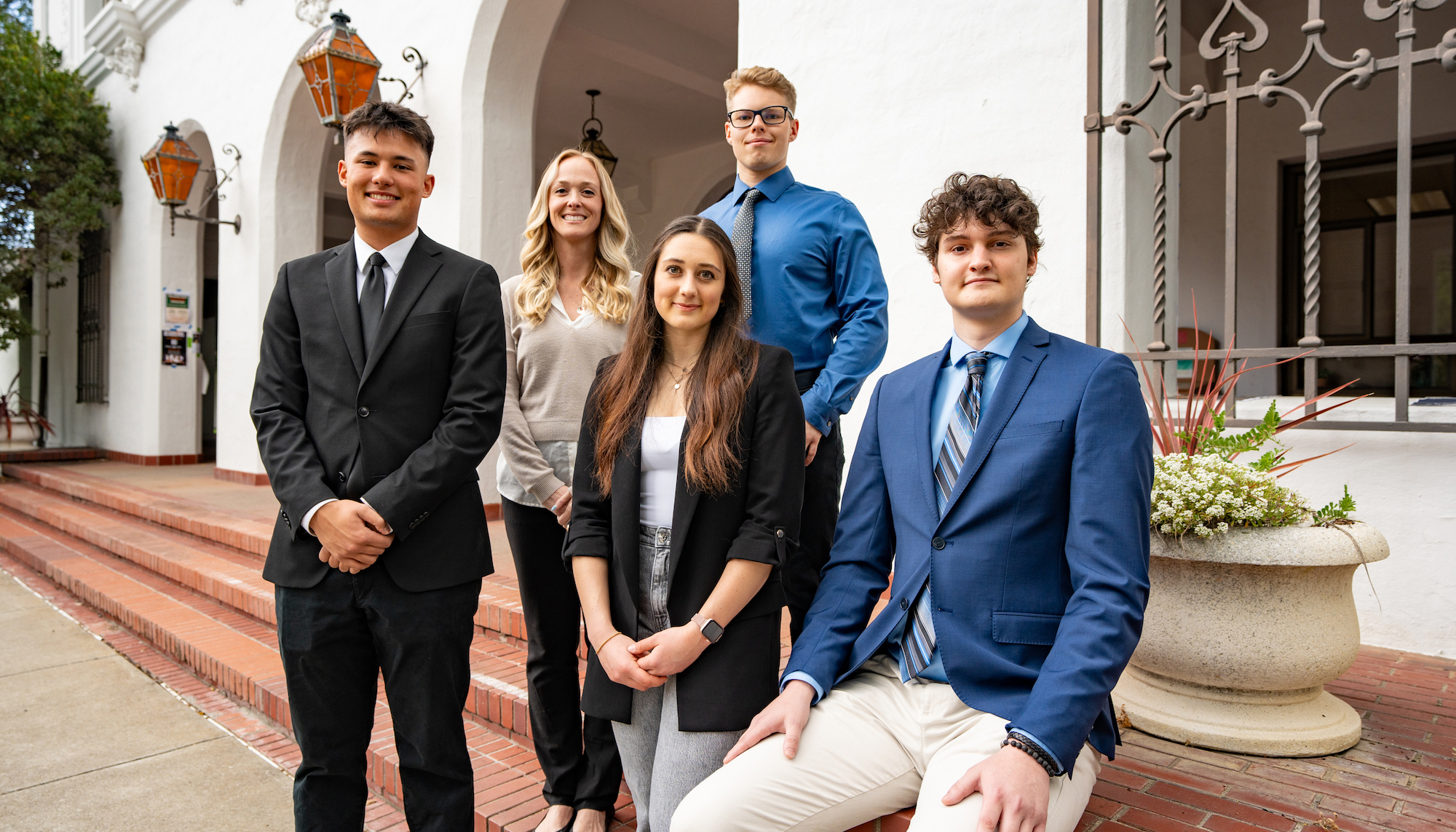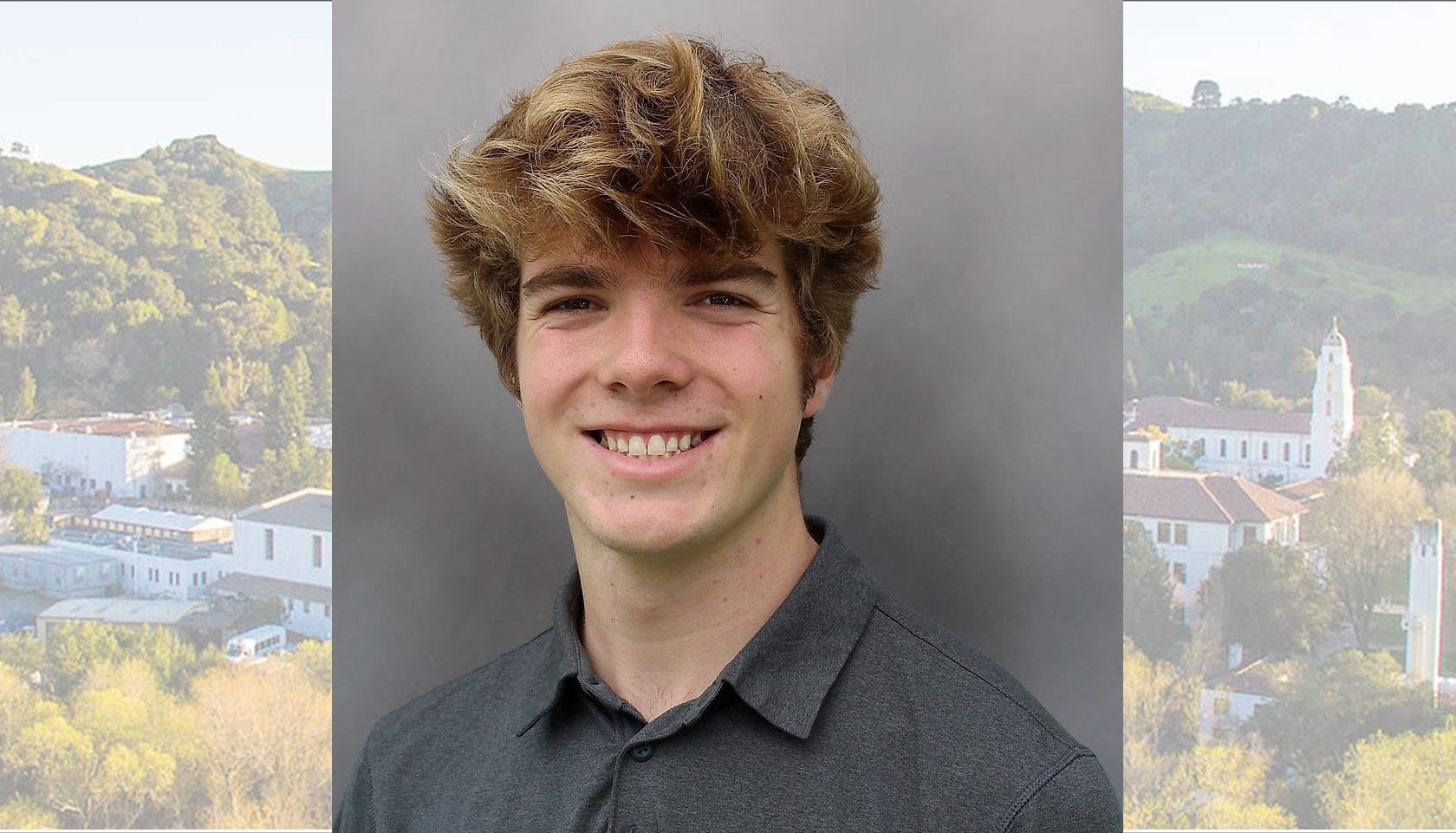
Problem solvers: From left, Connor Li and Nate Isaeff looked at the role of astrocytes—the star-shaped glial cells that make up the bulk of the human nervous system—in artificial neural networks. / Photo by Francis Tatem
Brain Blast: How Spending the Summer Building Machine Learning Programs Put These Students on the Leading Edge of AI Technology
Nate Isaeff and Connor Li modeled artificial neural networks, working under guidance of Zahra Sajedinia in the School of Economics and Business Administration. Now they have a deeper understanding of AI and how to improve it.
Each year, students in the School of Science's Summer Research Program spend ten weeks exploring new frontiers, conducting groundbreaking research alongside faculty experts in fields like data analytics, psychology, and chemistry. The programs are purposefully hands-on; for instance, this summer, 20 students could be found tackling research that ranged from cataloging binary star systems to tracking the growth of lichen across topographies to studying chimpanzee and gorilla bone variation.
Two of those students, Nate Isaeff ’25 and Connor Li ’25, spent their summer exploring a more abstract, less tangible—but increasingly important—frontier: artificial neural networks.
“Their ability to identify patterns, make predictions, and learn from data allow us to solve problems that were previously out of reach.”
—Assistant Prof. Zahra Sajedinia
Scientists have long sought to recreate the architecture of the human brain through computing. As early as 1943, researchers were devising artificial neural networks, or ANNs, that mimicked the firing of neurons. Only in the last decade, though, has neural net technology lived up to its potential. Today, neural networks “are the foundation of countless AI systems, from chatbots to self-driving cars,” says Zahra Sajedinia, an assistant professor of Data Science and Computer Science in the School of Economics and Business Administration. “Their ability to identify patterns, make predictions, and learn from data allow us to solve problems that were previously out of reach.”

But just how intelligent can artificial intelligence be? With Sajedinia as their faculty advisor, Isaeff and Li spent their summer pursuing that question. Specifically, they focused on recreating astrocytes: the star-shaped glial cells that make up the bulk of the human nervous system. Once thought to be merely a support cell, researchers now see astrocytes as vital to overall health and brain performance.
“Historically, artificial intelligence tools, such as artificial neural networks, primarily use only neurons,” Sajedinia says. That means Isaeff and Li are some of the first researchers to incorporate astrocytes into an ANN. It also means their results could, on some level, inform the future of this growing field.
Neural pathways
A Computer Science major, Nate Isaeff transferred to Saint Mary’s in Spring 2024. He learned of the Summer Research Program just days after arriving on campus and was immediately intrigued. He even turned down a job at a San Francisco-based IT firm to take part, he says: “I realized the research program would be a more advanced role and more relevant to what I want to do.”
Connor Li, also studying Computer Science, began his first year at Saint Mary’s in 2021. He, too, was drawn to SRP for its potential career boost. As someone who plans to pursue graduate studies in data science, he says, “I figured the best thing would be to get some research experience early.” (He certainly wouldn’t be the first to jumpstart his career through SRP: Brianna Bibel ’16, now a visiting professor of biochemistry at SMC, first fell in love with the lab during her own Summer Research Program.)
Sajednia, for her part, is also a relatively new addition to the Gael community. Originally from Iran, she earned her PhD in Mathematical and Computational Cognitive Science from Purdue University in 2021 and has quickly established herself as a leading scholar of ANNs and equitable AI. She joined the faculty of the School of Economics and Business Administration in 2022.
As for what brought her to Saint Mary’s, Sajednia says, “I was attracted to the opportunities to impact students’ lives. I love that I can provide students the chance not only to learn science but also to engage in their communities and explore real-life applications.”
This summer was her first opportunity to lead an SRP, and she was eager to take part. “I was fortunate to have exceptional advisors who guided me throughout my academic journey,” she says. “I now aim to offer the same support and guidance to my students.”

Thinking it through
During her doctoral studies at Purdue, Sajednia created a spiking neural network model that could be used to understand the role of astrocytes in the human brain. Li and Isaeff decided to follow in her footsteps, with one particular focus: the implementation of astrocytes in non-spiking neural networks. Through July and early August, they developed and ran two versions of their ANNs—one with astrocytes, one without—to see if the artificial cells would help the programs identify handwritten numbers more accurately.
Isaeff and Li added their astrocyte models to what is known as a recurrent neural network architecture. Unlike earlier ANNs, which superficially recreated the structure of the brain, a recurrent network is “always learning, just like a human brain,” Li explains. “They can take in new information and make better judgments from that.” (If that sounds familiar, you may be one of the 180.5 million monthly users of ChatGPT. The generative AI chatbot relies heavily on recurrent neural networks.)
Overall, Isaeff’s experiment was a success. “The models with astrocytes end up having a better evaluation performance,” he says. All told, adding astrocytes to his ANN brought a 10% increase in accuracy over the model without them.
For his project, Li ran two datasets through his models and found similarly encouraging results. For Dataset A, the astrocyte model’s accuracy jumped around 10%, while Dataset B had nearly perfect results every time. “It seems that no matter what, there’s always an improvement with the addition of astrocytes,” Li says.
Both Isaeff and Li’s research demonstrated astrocytes’ “potential for performance improvement,” Sajednia says. “Their research could potentially contribute to the creation of more advanced AI tools.”
A network of networkers
For Li and Isaeff, the Summer Research Program proved invaluable in more ways than one. On one level, it allowed them to understand the nuts and bolts of neural networks by building them from the ground up. Beyond that, though, the two Gaels had a rare opportunity: the chance to present their projects to an international audience.

Instead of having the full ten weeks to complete their projects, Li and Isaeff crunched to finish in eight weeks, just in time to attend and present at the International Conference on Neuromorphic Systems (ICONS) at George Mason University in Fairfax, Virginia. From July 30 to August 2, researchers, developers, and other professionals gathered to discuss the latest in neuromorphic computing.
Being there was “a little bit daunting,” Isaeff says. “We were the only undergraduates there.” They credit their SRP grant with making the trip possible; through it, they were able to pay for housing, transportation, and printing posters for the Student Poster Competition.
While they didn’t win the competition, Li says he’s grateful they got to attend at all. “We were just surprised we got accepted for the conference. That was enough for us.” More importantly, the three days at the conference gave Li and Isaeff a chance to meet others in the field, from graduate students to startup founders. It offered a glimpse of where this career path could, eventually, propel them.
On the last day of the conference, Isaeff attended a panel of neuroscientists discussing the intersecting possibilities of neuroscience and AI. “They were saying they want to see more biology-inspired, brain-inspired computing, which is exactly what we were doing this summer at Saint Mary’s,” he says with a smile.
Great minds think alike.
Jordan Sapp MFA ’25 is a Graduate Editorial Fellow. Hayden Royster is Staff Writer in the Office of Marketing & Communications. Write them.




